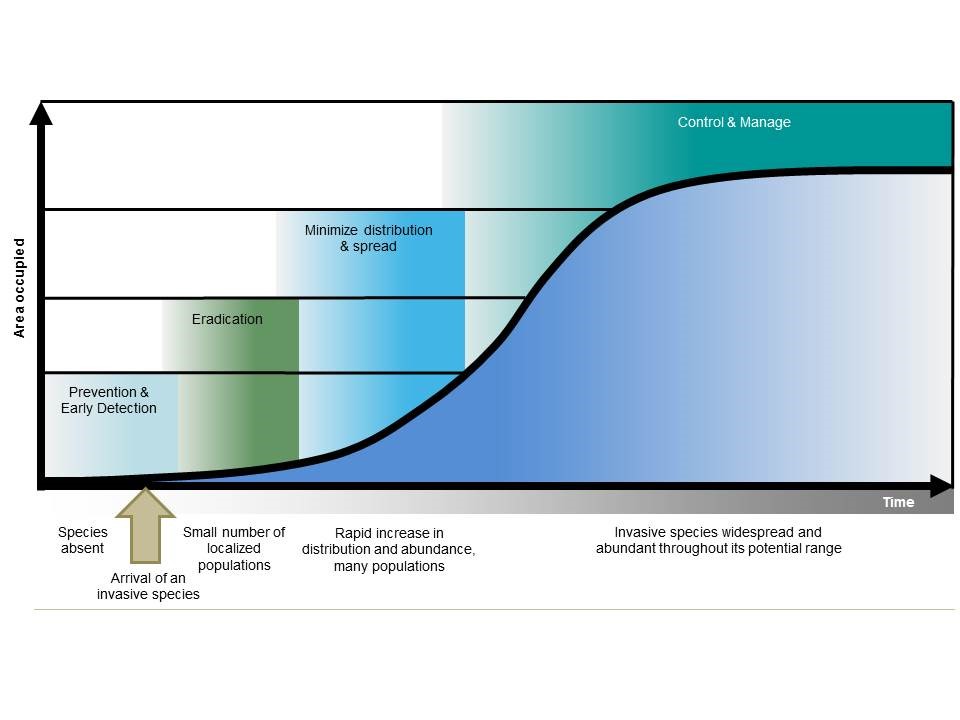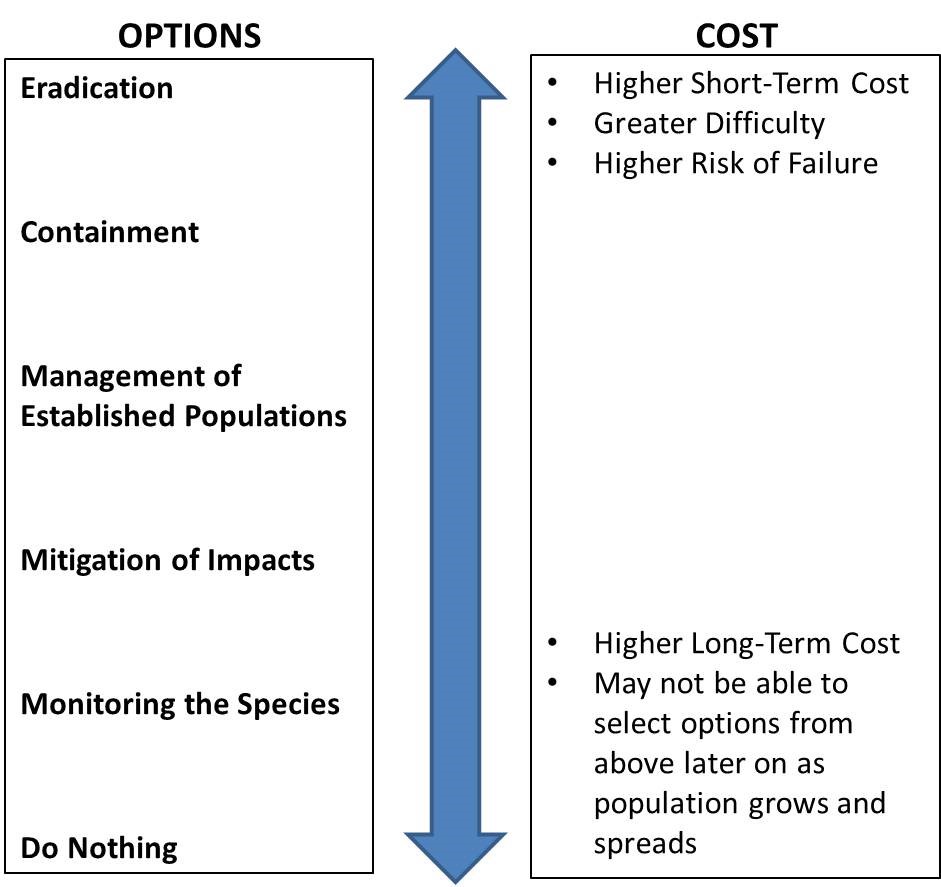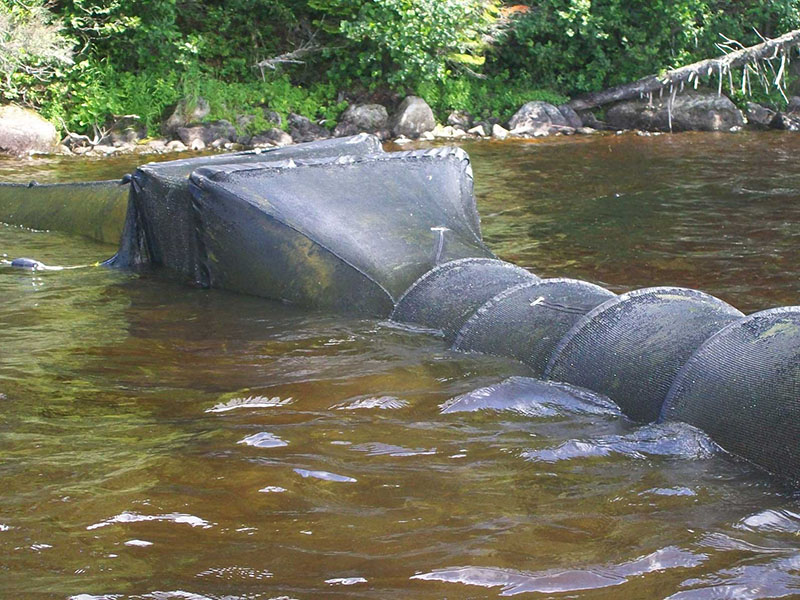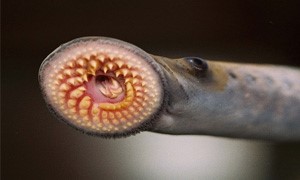Control and management of aquatic invasive species
Learn about our management options and activities to control and prevent the spread of aquatic invasive species.
On this page
- Assessments
- Help remove and manage aquatic invasive species in your area
- Control and management options
- Deciding factors
- Control activities
- Related links
Assessments
When an aquatic invasive species is discovered, we look at a variety of factors to help us develop a response plan.
We look at scientific factors like:
- containment feasibility
- environmental suitability
- biological characteristics of the invasive species
- natural and anthropogenic pathways for dispersal
- determination of invasion status (early versus well-established)
Socio-economic factors include:
- societal considerations
- potential costs for control and management
- direct and indirect costs caused by the species
We also conduct risk assessments, such as determining:
- the magnitude of impacts
- the potential likelihood of introduction/spread
- any associated uncertainty with the risk assessment
Help remove and manage aquatic invasive species in your area
Managing aquatic invasive species is a shared responsibility. Fisheries and Oceans Canada can provide advice to anyone contemplating a control or management project. Here are some examples of where you can help out.
- Identify: Confirm the identification of an aquatic invasive species you have found and report it.
- Fishing: Fisheries and Oceans Canada, as well as most provinces and territories can issue a fishing licence specifically to catch an aquatic invasive species.
- Habitat modification: Projects to get rid of aquatic invasive species that involve modifying a shore line, changing water levels, or may have any other impact on fish and their habitat must be authorized by Fisheries and Oceans Canada.
- Pesticide use: Many chemicals can be effective control agents. However there are many consequences to human health or the local ecosystem if they are used improperly. Fisheries and Oceans Canada or one of the delegated provinces and territories must authorise their use in aquatic ecosystems.
For more information, see our propose a project page.
Control and management options
There are a number of management and control options available to federal and provincial authorities that can be considered when responding to an aquatic invasive species discovery. These options include:
- eradication (manual, chemical, biological or mechanical), which is generally only possible when a new introduction is detected early and the distribution and population is low
- containment to slow the spread and limit access to the waterbody by screening off a portion of it
- managing established populations to keep populations below a threshold of ecological or economic effect
- mitigating impacts to particular activities or resources
- monitoring the species to ensure chosen management approaches are effective
- doing nothing, choosing not to implement management action, and instead accepting any impacts caused by the species
Deciding factors
To make decisions on management actions, we have to consider all factors, such as those that are:
- legal
- social
- technical
- biological
- economic
Eradication is the first option considered, as it can eliminate the species and prevent any long-term ecological or economic impacts.
However, depending on the situation, eradication may not be possible. We have to assess the feasibility of an eradication project based on complex factors. These include seasonal events (like large rain events that may create water connectivity) and species characteristics (such as dispersal and reproductive strategies).
Ideal conditions for eradication are when an introduction is in a Canadian waterbody that has no water connectivity.
Containment and/or eradication may not be feasible when an invasive species is introduced into a connected waterbody (like a river system) or open water environment (marine environment).

Adapted from Invasive Plants and Animals Policy Framework, State of Victoria, Australia, Department of Primary Industries, 2010.

Potential cost and consequences of aquatic invasive species control and management options.
Options such as eradication and containment have higher short-term cost, greater difficulty and higher risk of failure. Mitigating impacts, monitoring the species and doing nothing have higher long-term costs, and choosing them means the possibility of eradication and containment might not be feasible later on as the population grows and spreads.
Control activities
The Aquatic Invasive Species Regulations allow actions such as using pesticides and fishing to control or eradicate aquatic invasive species. Departments with authorization to do so include:
- Parks Canada
- Fisheries and Oceans Canada
- provincial and territorial departments with delegated authority
In addition, Fisheries and Oceans Canada can authorize the modification of a waterbody to control or eradicate aquatic invasive species. Modification can range from pulling out invasive plants to draining the waterbody entirely.
We developed a response framework for aquatic invasive species in Canada (CSAS ResDocs - 2010/114). It aims to guide federal and provincial authorities in their response plans and activities. It describes the process of a response, factors to consider and potential management options.
Sea lamprey
Sea lamprey
Sea lampreys are parasitic pests that feed on blood of other fishes. They attach themselves to their scales with their suction mouth and teeth and pierce a hole through their skin with their tongues. Native to the Atlantic Ocean, they invaded the Great Lakes through man-made shipping canals. Since then, they have had devastating impacts on the sport, commercial and Indigenous fisheries in the Great Lakes.
Canada and the United States jointly manage sea lamprey since 1955. A variety of methods are used to keep the population of sea lamprey in check. These include chemicals that selectively kill lamprey larvae and barriers and traps that prevent adult lampreys from moving upstream to spawn. Ongoing control efforts have reduced the sea lamprey population by 90%. Visit the sea lamprey mission page for more information about Fisheries and Oceans Canada’s involvement.
Smallmouth Bass
Smallmouth Bass

A fyke net targeting Smallmouth Bass juveniles in the shallow waters of Miramichi Lake, New Brunswick.
Smallmouth Bass is an invasive freshwater fish in certain parts of Canada and is listed in Schedule 3 of the Aquatic Invasive Species Regulations. Smallmouth Bass was first discovered in Miramichi Lake, New Brunswick, in 2008. Following a risk assessment, Fisheries and Oceans Canada (DFO), in collaboration with watershed groups and the province of New Brunswick, initiated a control program in 2009.
This control program aims to reduce the population and its impact on native species. Control activities include the removal of Smallmouth Bass using fyke nets, gill nets, beach seining and electrofishing by boat and backpack. In addition, a barrier fence is installed and maintained at the outlet of the lake to prevent the spread of Smallmouth Bass into the Southwest Miramichi River. These activities remain ongoing and take place each year from early May to the end of October.
In 2019, Smallmouth Bass was discovered in the Southwest Miramichi River, approximately 10 km downstream of Miramichi Lake. This recent discovery has triggered a response, in collaboration with several partners, to determine the extent of the distribution in the Southwest Miramichi River and to remove fish where possible. Activities to remove fish and determine the extent of spread included angling, electrofishing, gill netting and eDNA analysis.
Related links
- Date modified:
